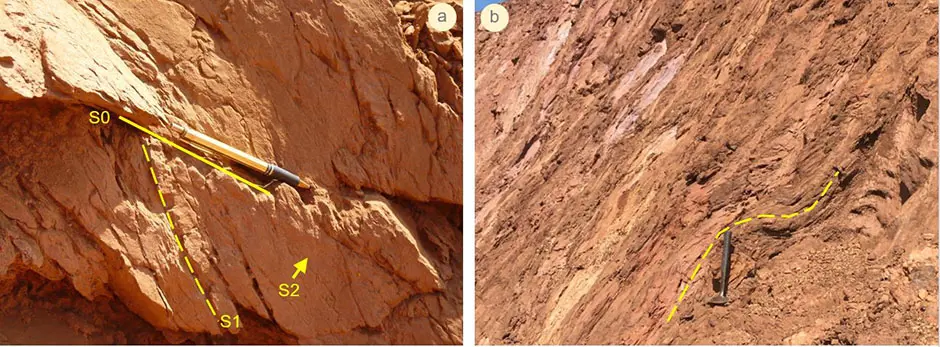SRK was engaged to assess opportunities of pit slope steepening for an iron ore mine in South India. The work was initiated with a site investigation programme that included structural and geotechnical mapping of the current pits, photogrammetry mapping of the benches, structural and geotechnical logging of the borehole cores, collection of geotechnical samples from borehole cores and pit benches, and undertaking geotechnical strength testing from an independent laboratory.
The iron formation rocks (high grade iron ore, siliceous ore and BIF) occurs within the core of a steep limbed, partly overturned synform that plunges moderately to the southeast. Both the limbs dip steeply to the southwest. The iron ores are hosted by phyllites with moderate to high weathering grades. Unaltered metabasics forms the basal unit of the folded sequence. The orebody and the phyllitic host rock show strong anisotropy, determined chiefly by compositional banding (SO) and foliation (S1) resulting in lower strength parallel to these planes. An axial planar cleavage (S2) related to a late cross fold and a conjugate set of fractures overprint the earlier structures at places.
SRK developed 3D weathering and geotechnical models of the deposit based on pit mapping and geotechnical logging of the borehole cores. Two strength domains and two structural domains were identified. High grade and siliceous ore, BIF and the phyllites were considered under a single geotechnical domain designated as weathered/ altered domain. Rock units of this domain shows strength anisotropy and were characterised by Mohr-Coulomb strength criterion. On the other hand, the metabasics formed the compact (hard rock) domain that was characterised by Generalised Hoek-Brown strength criterion. The hanging wall and the foot wall were considered as two major structural domains considering the variable orientation of the anisotropy planes.
The mine is operating in a relatively dry region with deep-seated occurrence of the water table. Apparently, groundwater setting will not adversely impact the stability of the pit slopes.
SRK undertook deterministic and probabilistic slope stability assessment within an anisotropic - isotropic media in order to arrive at optimal pit slopes. It was noted that the current overall slopes can be significantly increased while adhering to the internationally accepted safety standards. Designed final pit slopes were found to be sensitive to: (i) variation in host rock lithology, (ii) strength anisotropy and its orientation with respect to the final pit walls, and (iii) the grade of weathering and associated intact rock strength.
The final pit configuration was considered for the Client’s annual resource/ reserve reporting to the JORC code.

